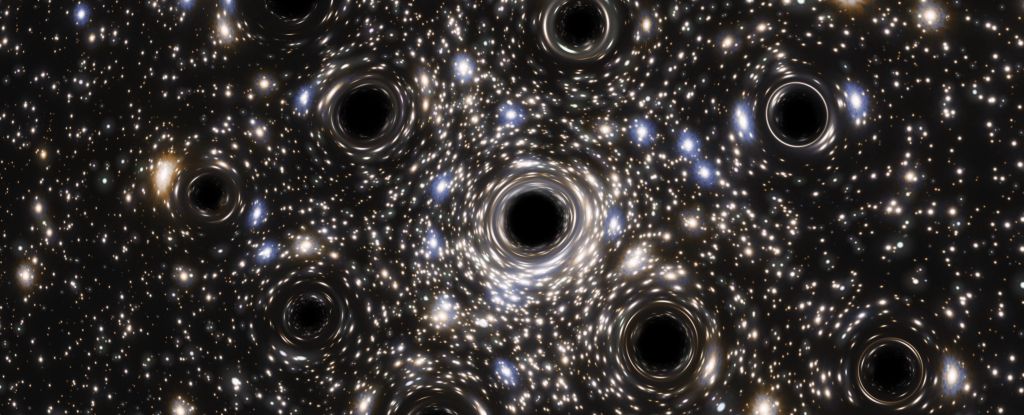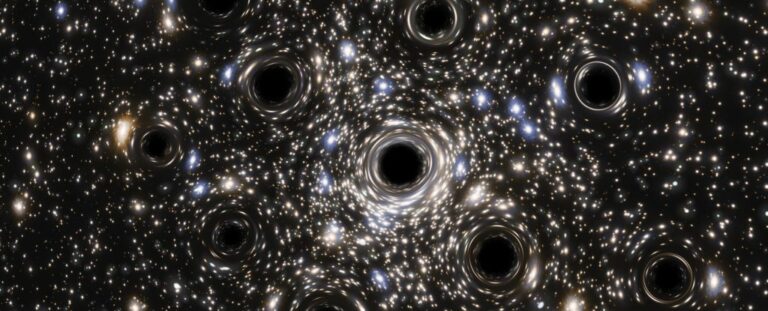Innovative Research Proposes Utilizing Minuscule Black Holes for Nuclear Power Generation
The concept of black holes elicits fear and dread, as they are believed to be inescapable and devour everything with nothing ever escaping. However, the accuracy of these beliefs is debatable and may be incorrect. Two physicists from Tianjin University in China, Zhan-Feng Mai and Run-Qiu Yang, have calculated how black holes could potentially be used as a source of power. Their calculations suggest that these extremely dense objects could function as rechargeable batteries and nuclear reactors, providing energy on a large scale.
Interestingly, the energy extracted does not come from within the black hole itself, but from the intense gravitational forces surrounding it. Black holes are believed to be abundant in our Universe, ranging in mass from a few times that of the Sun to billions of solar masses. Additionally, there is a theoretical class of black holes known as primordial black holes, which can be incredibly small, even at subatomic sizes.
These black holes are thought to have formed from overdensities in the primordial plasma that existed after the Big Bang. While the existence of primordial black holes is still uncertain, if they do exist, they could have significant implications, including their potential role as dark matter. It appears that we may have the opportunity to harness these hypothetical distortions in space-time in some manner.

The conversion of non-electrical energy into electrical energy is achieved by a battery, while a nuclear reactor utilizes nuclear reactions to generate power. However, Mai and Yang propose an intriguing concept that suggests a tiny black hole could potentially perform both functions.
Their paper explores the possibility of utilizing the immense gravitational force of a black hole to generate electric energy. They raise the question of whether black holes can be used as batteries, harnessing their gravitational force. They argue theoretically that a Schwarzschild black hole can be employed as a rechargeable battery.
Nevertheless, there are challenges associated with very small black holes, primarily Hawking radiation. This phenomenon refers to the loss of mass by a black hole due to the interaction between its event horizon and the quantum fields in its vicinity. The smaller the black hole, the faster mass is lost through Hawking radiation. Consequently, a sufficiently small black hole will completely evaporate within a relatively short period.
Additionally, a small black hole tends to rapidly consume surrounding matter, making it challenging to extract anything from its vicinity.
Mai and Yang have devised a method to replenish and recharge a primordial black hole above a specific mass, enabling it to generate electrical energy. By replenishing the black hole with charged particles, an atom-sized black hole weighing between 1015 and 1018 kilograms should be capable of producing this energy.
According to the researchers’ calculations, the black hole can convert a maximum of 25 percent of the input mass into energy, resulting in an efficiency rate of 25 percent. This surpasses the efficiency rate of most commercially available solar panels, which typically fall below 23 percent.
It is unlikely that we will have the means to test this theory. Even if we were certain of the existence of primordial black holes, it would be impossible to physically obtain and manage them. However, the analysis presented here presents some intriguing ideas.
The team suggests that their model of a black hole reactor falls within the mass range suggested for dark matter. This raises the fascinating prospect that we might be able to utilize one of the most enigmatic forms of matter in the Universe to generate power for everyday appliances such as refrigerators.
The findings of this research will soon be published in Physical Review D and are currently accessible on arXiv.*
This article is republished from sciencealert under a Creative Commons license. Read the original article.
Do not forget to share your opinion with us to provide you with the best posts !




0 Comments